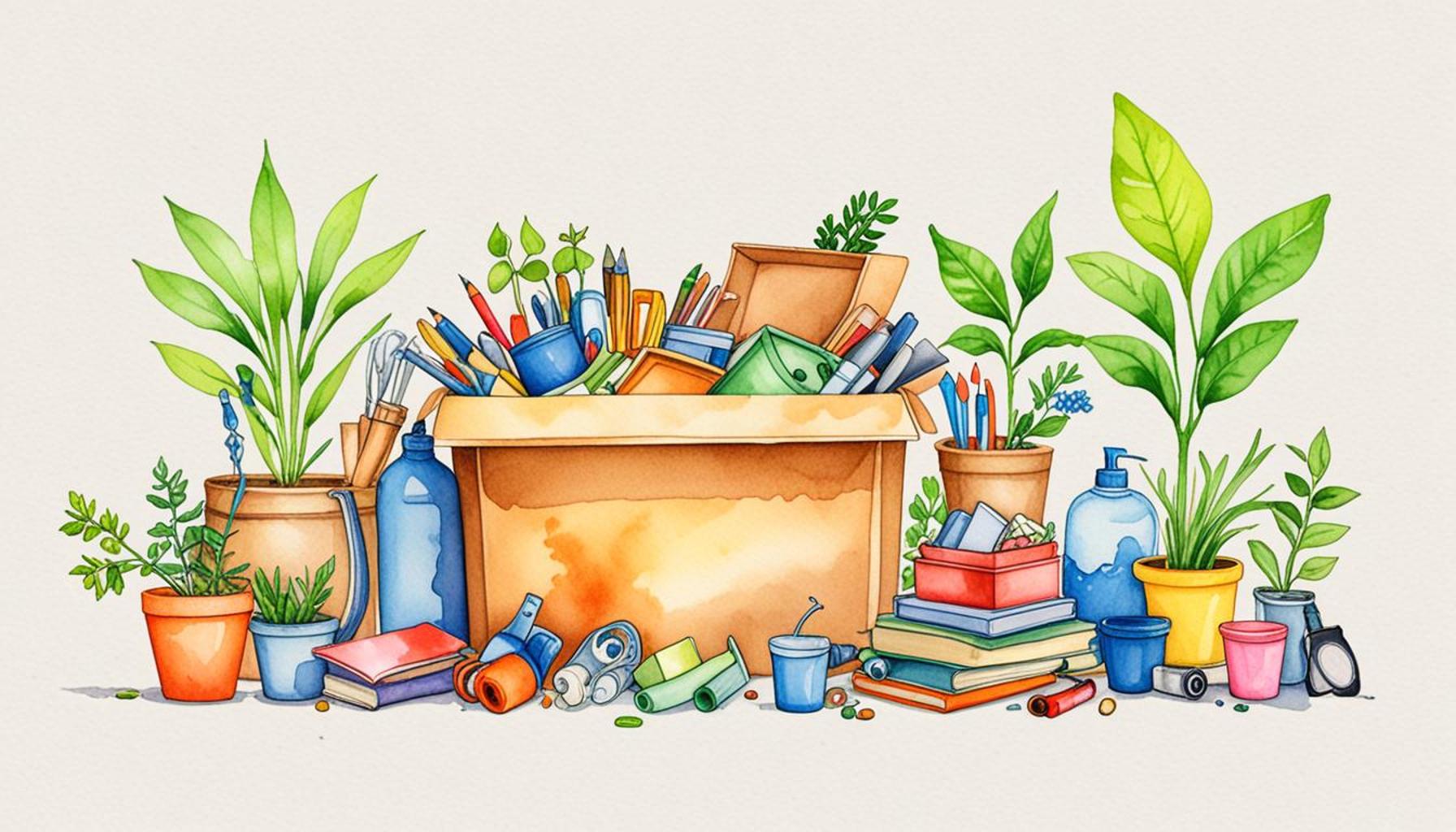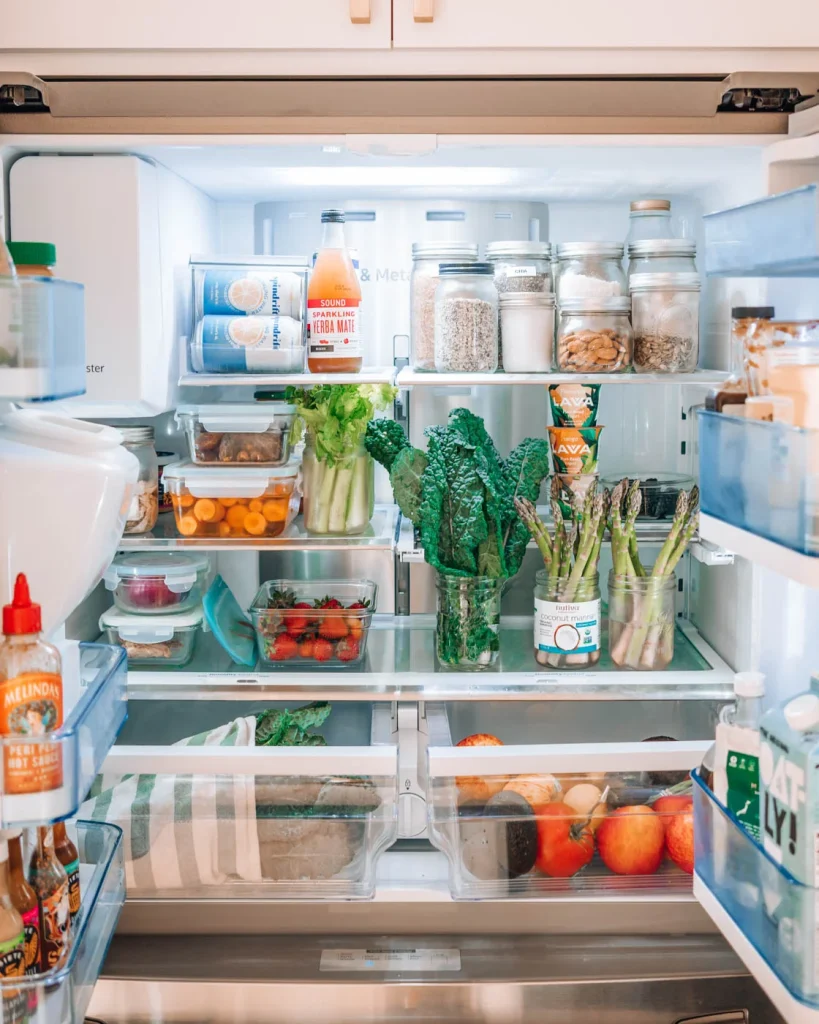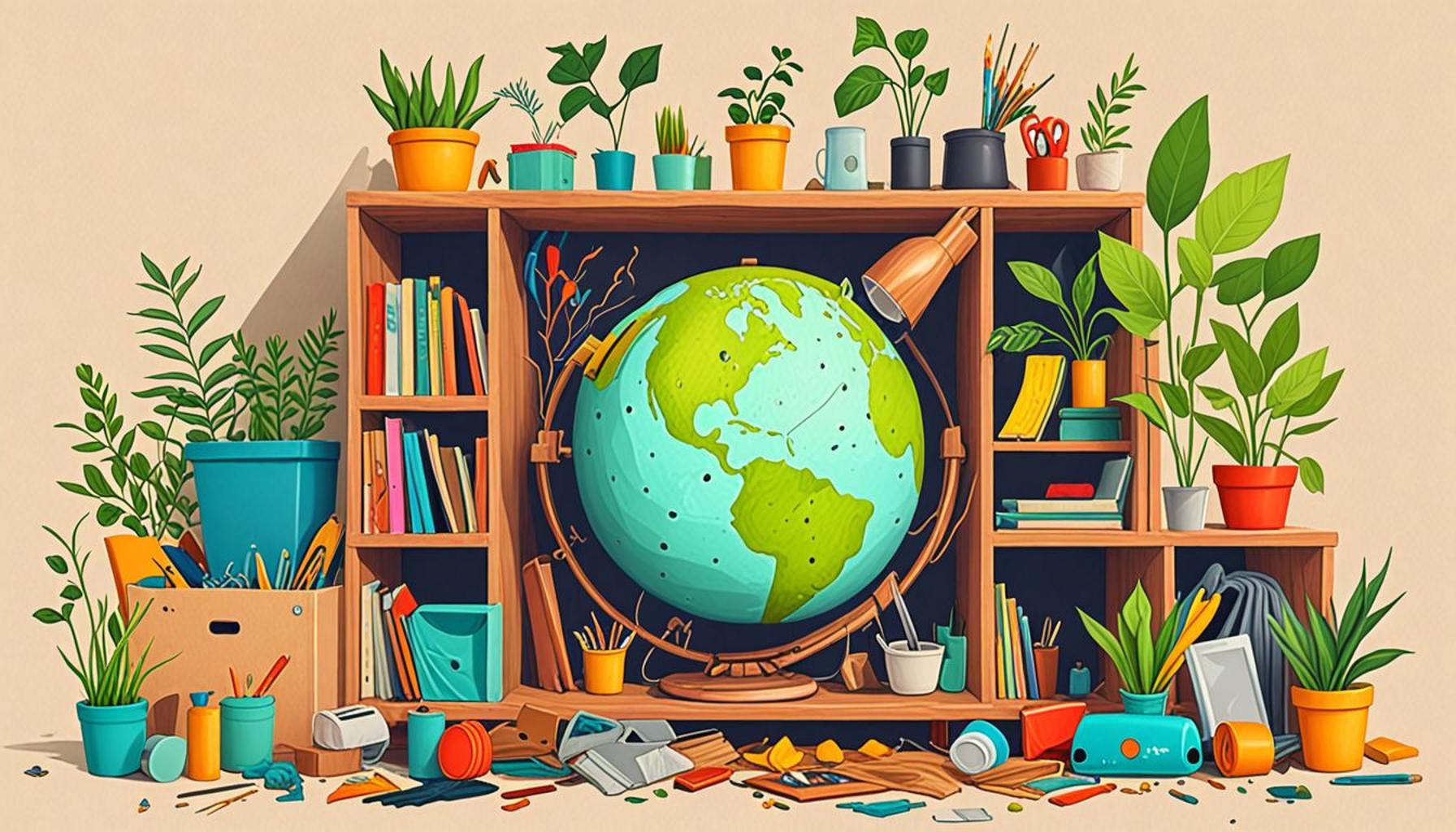Decluttering for Sustainability: Eco-Friendly Techniques to Minimize Waste and Maximize Space

The Space Crisis and Its Implications
As urban living continues to escalate, countless Americans find themselves grappling with a significant space crisis. The trend of downsizing and living in smaller apartments is becoming increasingly popular, particularly in cities like New York, San Francisco, and Chicago. With limited square footage, the impact of accumulated possessions becomes more pronounced, not only cluttering living spaces but also impacting our ecological footprint through increased waste production. This scenario underscores the importance of adopting innovative solutions to manage our belongings and preserve the environment.
What is Decluttering for Sustainability?
Decluttering for sustainability is a comprehensive approach that transcends mere organization. It integrates eco-friendly techniques aimed at fostering healthier living environments while preserving ecological integrity. This method involves:
- Minimize waste: By consciously sorting through items and opting for donation or recycling, individuals can drastically reduce the volume of items sent to landfills. For instance, according to the Environmental Protection Agency (EPA), textiles account for over 11 million tons of waste annually, a statistic that could be reduced through responsible decluttering.
- Maximize space: Thoughtful decluttering not only frees up physical space but also transforms cluttered areas into functional living zones. This is especially relevant in urban settings; for example, a compact studio can become a harmonious living area with multi-functional furniture and organized storage solutions.
- Encourage mindful consumption: This approach inspires individuals to shift their purchasing habits toward sustainability. By evaluating the necessity and longevity of new items before buying, consumers can minimize unnecessary acquisitions and promote ethical brands.
Why Should You Consider This Approach?
Adopting eco-friendly decluttering techniques extends beyond immediate personal benefits; it contributes significantly to global sustainability efforts. Here are compelling reasons to consider this approach:
- Environmental impact: Reducing clutter leads to decreased waste and resource conservation. A lifestyle change that incorporates sustainable decluttering can significantly lower an individual’s carbon footprint, aligning with larger environmental goals.
- Economic savings: Less clutter often translates to financial savings. By minimizing the need for additional storage space, individuals can save money on rent or storage unit fees. Additionally, mindful consumption can help curb impulse buying, leading to more strategic financial decisions.
- Enhanced well-being: A decluttered living space can lead to improved mental clarity and emotional well-being. Studies indicate that a tidy environment can reduce stress and promote a sense of control and peace in one’s life. Notably, many interior design experts advocate for simplicity, which emphasizes the psychological benefits of clear spaces.
Discover the transformative potential of eco-friendly decluttering techniques. By embracing this sustainable approach, you can create an environmentally friendly living space that not only aligns with your values but also supports a healthier planet for future generations.
DISCOVER MORE: Click here to learn about the importance of intention in your space

Practical Steps to Decluttering Sustainably
Embracing decluttering for sustainability requires more than just a desire to tidy up. It calls for actionable strategies and a commitment to minimizing waste and maximizing space in a purposeful way. Here are some eco-friendly techniques that can help you achieve a more organized and sustainable living environment:
1. The Four-Box Method
One of the most effective techniques for sustainable decluttering is the Four-Box Method. This method encourages individuals to categorize their belongings into four boxes: Keep, Donate, Recycle, and Trash. By physically sorting items this way, you are prompted to make conscious decisions about what truly remains valuable in your life. This technique not only aids in reducing waste but also promotes a sense of accountability towards your belongings. Consider these tips as you engage with the four boxes:
- Keep: Only allow items that you genuinely use or have a meaningful purpose.
- Donate: Look for local charities or thrift stores accepting items in good condition. You’ll be extending the life of these belongings while helping others.
- Recycle: Investigate local recycling programs for materials such as paper, plastic, and electronics that can be repurposed.
- Trash: Be mindful here; this is the last resort. Aim to minimize the number of items that go to landfills.
2. The 30-Day Minimalism Challenge
Another engaging method to cultivate a sustainable approach to decluttering is the 30-Day Minimalism Challenge. This challenge encourages participants to remove one item on the first day, two items on the second day, and so forth, up to 30 items by the end of the month. This gradual but consistent approach makes the process manageable and less overwhelming. It promotes a continuous evaluation of what you truly need while fostering mindful consumption habits.
3. Repair Instead of Replace
A pervasive mindset in today’s consumer culture is the idea that when something breaks or wears out, it should be replaced. However, adopting an eco-friendly decluttering technique includes embracing the repair instead of replace philosophy. Before tossing out damaged items, consider:
- Upcycling: Get creative and repurpose items for new uses instead of discarding them. For example, turning old t-shirts into reusable shopping bags.
- Repair Workshops: Seek services or community workshops dedicated to repairing items, from clothing to electronics. This not only keeps waste down but also fosters community interaction and learning.
These methods serve as practical, eco-friendly techniques to minimize waste and maximize space in your home. By engaging in sustainable decluttering practices, you foster an environment conducive to personal well-being while simultaneously nurturing the planet. Remember, every small step you take contributes to a larger movement towards ecological sustainability.
| Eco-Friendly Technique | Advantages |
|---|---|
| Upcycling | Transforms waste into valuable items, reducing landfill use. |
| Minimalist Approach | Encourages conscious consumption, thus lowering carbon footprints. |
| Digital Decluttering | Reduces electronic waste by promoting paperless solutions and efficient data management. |
| Donation and Recycling | Extends the life cycle of products, ensuring they are reused rather than disposed of. |
Delving deeper into the practices of decluttering for sustainability, upcycling stands out as a dynamic method to repurpose old items. This innovative technique eliminates waste by turning what was once considered useless into something functional or decorative, thus significantly contributing to the reduction of landfill usage. The minimalist approach further extends these eco-friendly practices by advocating for mindful consumption, encouraging individuals to prioritize quality over quantity. This mindfulness not only minimizes waste but also plays a role in lowering carbon footprints.Digital decluttering is also an essential topic in the realm of sustainability. Emphasizing a move towards paperless solutions, this technique assists in managing digital clutter, thereby reducing electronic waste and promoting efficient data management. Finally, the act of donation and recycling serves to extend the life cycle of many products, reinforcing the notion that items can have value beyond their initial use. This fosters a culture of reuse and respect for resources, aligning perfectly with eco-friendly values. As these techniques gain popularity, they beckon a further exploration of sustainable living practices.
DISCOVER MORE: Click here to learn how minimalism can elevate your workspace
Exploring Innovative Strategies for Sustainable Decluttering
As the pursuit of a minimalist and sustainable lifestyle gains traction, innovative strategies for decluttering have emerged to inspire individuals to rethink their relationship with material possessions. In incorporating these techniques, you’ll not only tidy your living space but also contribute positively to the environment:
4. The Digital Detox
In a world inundated with digital clutter, the Digital Detox is a vital practice alongside physical decluttering. This involves organizing and reducing your digital footprint—from your email inbox to your social media accounts. Here are some key aspects to consider in your digital decluttering journey:
- Email Management: Unsubscribe from newsletters and promotions you no longer find useful. Aim to keep your inbox organized by creating folders for important emails and archiving or deleting the rest regularly.
- Photo Management: Review your digitally stored images. Delete duplicates and blurry photos, and create folders for categorized images to minimize overwhelming digital spaces.
- App Cleanup: Assess your smartphone and tablet apps. Delete apps you haven’t used in months to reduce digital clutter and improve device performance.
5. The 90/90 Rule
This technique, known as the 90/90 Rule, offers a practical litmus test to evaluate your belongings. If you haven’t used an item in the past 90 days and don’t foresee needing it in the next 90 days, it’s time to let it go. This method emphasizes the importance of mindful consumption and encourages you to own only what you truly need. Consider these practical applications:
- Seasonal Wardrobe Audit: Apply the 90/90 Rule to your wardrobe. If you haven’t worn a piece in three months and don’t anticipate wearing it in the next three months, consider donating or recycling it.
- Home Decor Evaluation: Look at your home decor items. Ask yourself whether they provide joy or serve a purpose. If not, it may be time to donate or repurpose them.
6. Composting
Transitioning from decluttering to overall sustainability, composting emerges as an eco-friendly technique that nurtures the environment while helping you manage waste more effectively. Instead of tossing your kitchen scraps into the trash, consider turning organic waste into a rich compost that can rejuvenate your garden. Here are a few insights into implementing a successful composting system:
- What to Compost: Fruits and vegetable scraps, coffee grounds, eggshells, and yard waste are excellent candidates for composting.
- Composting Methods: Explore different composting methods like traditional compost bins, vermicomposting with worms, or bokashi composting. Each has unique advantages suited to various living situations.
- Community Composting: If composting at home seems daunting, explore local community composting programs. Many cities have initiatives that allow residents to drop off organic waste, promoting community engagement and sustainability.
By actively engaging in these innovative strategies for decluttering, you can significantly mitigate waste while creating a more organized and vibrant living space. Remember, every action counts in the movement toward a sustainable future, transforming not just your home environment but also contributing to the well-being of our planet.
DISCOVER MORE: Click here to learn about space optimization strategies
Conclusion
In summation, the journey toward sustainable living begins with a conscious effort to declutter our spaces, both physically and digitally. By adopting the aforementioned eco-friendly techniques, such as organizing our digital lives, applying the 90/90 Rule, and engaging in composting, we not only maximize our spaces but also make a significant contribution to reducing waste. Each small step in decluttering is pivotal in fostering a mindset of mindful consumption and sustainable practices.
As we navigate the complexities of modern living, it is crucial to recognize that every choice we make about our possessions has an impact on the environment. By reassessing our belongings and prioritizing space for items that truly enrich our lives, we cultivate a clutter-free environment that promotes well-being. This not only leaves us with a serene home but also aligns our lifestyles with eco-friendly values.
Ultimately, the quest for decluttering does not have to be overwhelming. Embrace these practices at your own pace and enjoy the journey of transformation. By creating a sustainable and organized environment, you are playing a vital role in nurturing our planet for future generations. Let each decluttering endeavor inspire you to think critically about consumption and waste, paving the way toward a more sustainable and harmonious existence.


